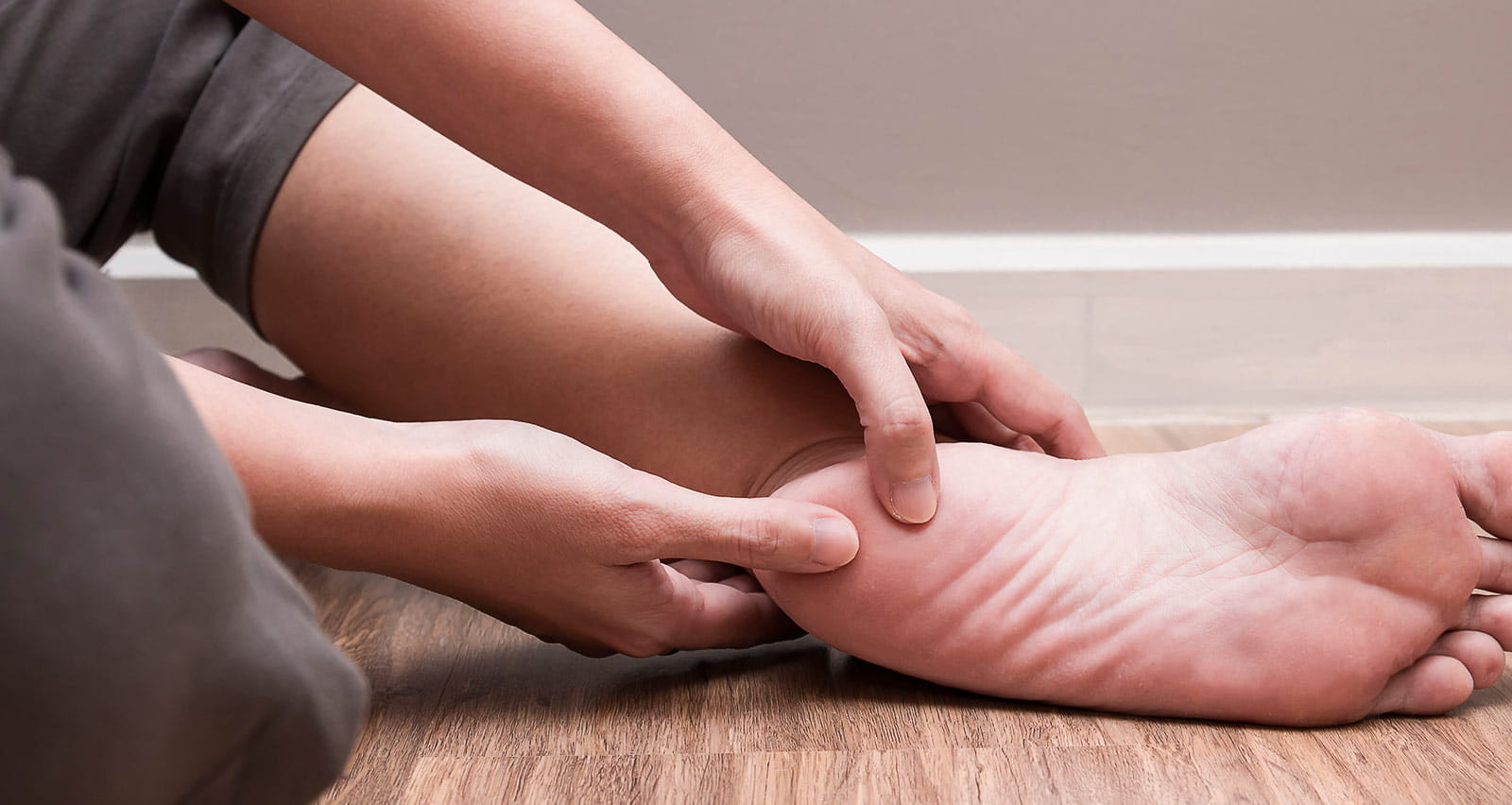
Expert Diagnosis & Treatment of Plantar Fasciitis
The plantar fascia is a wide band of fibrous tissue on the bottom of the foot that connects the heel bone to the toes. It helps to support the arch of the foot and is used during walking, running and other foot movements. If the plantar fascia is repeatedly overstretched or overused, it can lose some of its elasticity and become inflamed. When this occurs, it is called plantar fasciitis – one of the most common causes of heel pain.
Schedule an Appointment
The orthopedic specialists at University Hospitals have the advanced skills and experience to treat all foot and ankle conditions, including plantar fasciitis. To schedule an appointment, call 216-220-9088 or schedule online.
Causes & Risk Factors for Plantar Fasciitis
Plantar fasciitis is most common in active adults between the ages of 25 and 65. Athletes who engage in high impact sports such as long-distance or downhill running are particularly susceptible. Other possible causes and risk factors include:
- Excess weight or pregnancy
- A tight Achilles tendon
- Flat feet or a high foot arch
- Diabetes
- Wearing shoes with inadequate arch support
Symptoms of Plantar Fasciitis
Symptoms can develop gradually over time or occur suddenly after engaging in intense physical activity. The severity and duration of symptoms can vary from person to person and may include:
- Pain. A dull ache or sharp stabbing sensation on the bottom of the foot, near the heel, is the most common symptom of plantar fasciitis. The arch along the bottom of the foot may also ache or burn. The pain is typically worse first thing in the morning and may subside after a few minutes of walking. Although the discomfort is usually not felt during exercise, it may worsen after physical activity.
- Tenderness. The bottom of the foot, especially near the heel may be tender to the touch.
- Stiffness. The foot may be stiff upon wakening or after prolonged periods of sitting, making it difficult to walk comfortably.
Early intervention is essential for proper management of this condition so anyone experiencing any of these symptoms should be evaluated by a foot and ankle expert. Untreated, small tears may occur in the tissue along with thickening and swelling of the fascia, leading to a chronic, less treatable condition.
Expert Diagnosis of Plantar Fasciitis
In addition to taking a medical and lifestyle history, your doctor will perform a physical exam of the foot to check for the characteristic symptoms of plantar fasciitis. The mobility of the ankle, particularly the “up” motion, will also be evaluated.
Because other foot conditions such as Achilles tendonitis can provoke similar symptoms, imaging scans such as ultrasound or MRI may be done to confirm or rule out a diagnosis of plantar fasciitis.
Nonsurgical Treatments for Plantar Fasciitis
Although it can take several months, most people with plantar fasciitis will heal and recover with only conservative treatments, such as:
- Rest. It may be recommended that you avoid high impact activities that put stress on your feet. A walking boot or crutches may be recommended for short-term use to give the plantar fascia time to heal.
- Pain Medications. Over-the-counter nonsteroidal anti-inflammatory drugs (NSAIDs) such as ibuprofen to reduce pain and inflammation.
- Icing. Applying an ice pack for 15-20 minutes, several times a day, can reduce inflammation in the affected area.
- Stretching. Gentle stretching of the muscles of the feet and calves can reduce tension on the plantar fascia. Your doctor may recommend that you work with a physical therapist to help you learn the exercises – in some cases, night splints may be prescribed to stretch the muscles while you sleep.
- Supportive Footwear. Wearing shoes that provide good arch support and cushioning can help reduce pain. Your doctor may also recommend custom-made shoe inserts (orthotics) if pain persists.
If the pain does not respond to the above treatments, your doctor may recommend:
- Corticosteroid Injections. The injection of steroids in and around the plantar fascia may provide short-term pain relief but is not recommended for long-term use.
- Botox® Injections. Injecting botulinum toxin in and around the plantar fascia may relieve pain in some people.
- Laser Therapy. Your doctor may suggest low-level laser therapy which uses light energy to improve circulation in the foot, reduce inflammation and promote healing.
Surgical Treatment of Plantar Fasciitis
Although the vast majority of people with plantar fasciitis will improve with conservative, minimally-invasive care, if pain persists and improvement is not noted, surgery may be necessary. Surgical procedures that may be considered include:
- Gastrocnemius Recession. A small incision is made on the inside of the calf and the muscles are lengthened using a special instrument. Designed to increase ankle flexibility and relieve tension on the plantar fascia, this procedure is low risk but can result in nerve damage and calf weakness.
- Partial Plantar Fascia Release. An incision is made on the bottom or side of the heel to relieve tension in the fascia. The most common complication of release surgery is nerve damage.
Most patients experience good results with surgery. However, all surgeries carry some degree of risk. Patients should talk to their foot and ankle specialist about the risks and benefits of surgery before proceeding.
Make an Appointment
Our orthopedic experts offer in-person and virtual visits. Call 216-220-9088 or schedule your visit online today.


